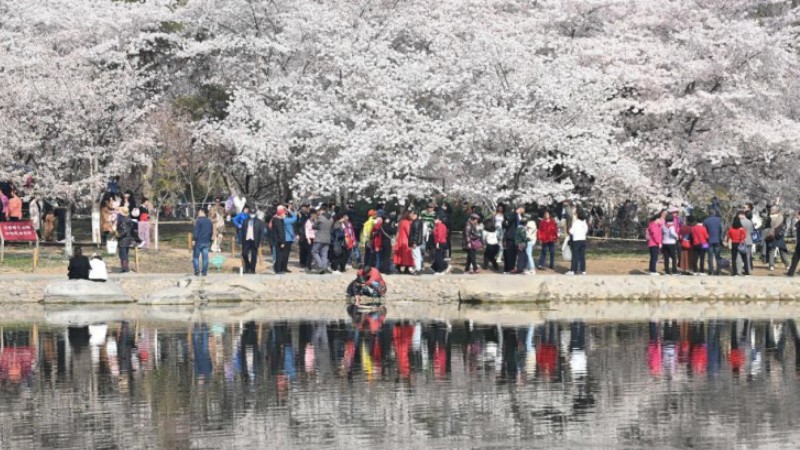U.S. life expectancy decline reveals deep-rooted challenges
LOS ANGELES, March 31 (Xinhua) -- The United States continues to see a decline in life expectancy though the country has the highest healthcare spending among wealthy nations, reflecting systematic problems, inequality and other challenges.
The average American life expectancy was shortened by more than seven months in 2021, a historic decline for the second straight year, in the wake of an already large drop of 1.8 years in 2020, according to the U.S. Centers for Disease Control and Prevention (CDC).
The expected life span of Americans decreased to 76.4 years in 2021, logging its shortest level since 1996.
While the COVID-19 pandemic has driven most of the decline in life expectancy, a rise in accidental deaths and drug overdoses also contributed, as did deaths from heart disease, chronic liver disease and cirrhosis, according to the newest report from the U.S. National Center for Health Statistics.
Excess deaths due to COVID-19 and other causes in 2020 and 2021 led to an overall decline in life expectancy between 2019 and 2021 of 2.7 years for the total population, according to the report published at the end of 2022.
Steven Woolf, director emeritus of the Center on Society and Health at Virginia Commonwealth University, characterized the diminution of life expectancy in the United States as "historic."
A new report released by the CDC also showed maternal mortality in the United States reached a high in 2021.
Mortality rates among U.S. children and adolescents are also on the rise, according to a paper published in the journal of the American Medical Association.
"This increase in all-cause pediatric mortality has ominous implications. A nation that begins losing its most cherished population -- its children -- faces a crisis like no other," said the paper.
"This is the first time in my career that I've ever seen an increase in pediatric mortality. It's always been declining in the United States for as long as I can remember," said Woolf, the paper's lead author. "Now, it's increasing at a magnitude that has not occurred at least for half a century."
While other high-income countries were also hit hard in 2020, most had begun to recover by last year.
Despite having the highest healthcare spending among peer wealthy nations, Americans die at younger ages across every demographic group compared to their counterparts in other wealthy nations.
"How could this happen? In a country that prides itself on scientific excellence and innovation, and spends an incredible amount of money on health care, the population keeps dying at younger and younger ages," National Public Radio reported.
Americans eat more calories and lack universal access to health care, the report said. But there is also higher child poverty, racial segregation, social isolation, and more, and even the way cities are designed makes access to good food more difficult.
The average lifespan of Americans has decreased also as a result of an increase in suicide which poses a high risk for younger people.
Murders and suicides involving guns have reached an all-time high in the United States. From 2020 to 2021, the rate of firearm homicides and that of firearm suicides both increased by more than 8 percent, according to a report released by the CDC last October.
Deep-rooted inequities and structural racism are also contributing more to ethnic breakdown in life expectancy than other rich countries, said a report of TRT World, an international news platform.
According to Ann Bullock, former director of diabetes treatment and prevention at the federal agency of Indian Health Service, Native American and Alaska native populations had the lowest life expectancy of any race or ethnicity at 65.2 years.
Indigenous peoples who already had high rates of chronic diseases due to poverty, prejudice and limited access to healthcare were more vulnerable in the COVID-19 pandemic.
In a report of independent U.S. news outlet Common Dreams, Woolf emphasized what public health experts call "the U.S. health disadvantage," with Americans relying on a healthcare system driven by profit motives instead of public health, widespread access to guns, high levels of pollution, and economic inequality as risk factors contributing to the drop in life expectancy and overall poor health conditions compared to other high-income countries.
Photos
Related Stories
- At least 21 killed, over 130 injured after tornadoes, storms hit multiple U.S. states
- Unsheltered Americans, shattered American dream
- Interview: U.S. system plutocratic rather than democratic, British commentator says
- U.S. pulls back from values once defining it: poll
- Federal gov't sues U.S. railroad over discharge of pollutants, hazardous substances
Copyright © 2023 People's Daily Online. All Rights Reserved.









